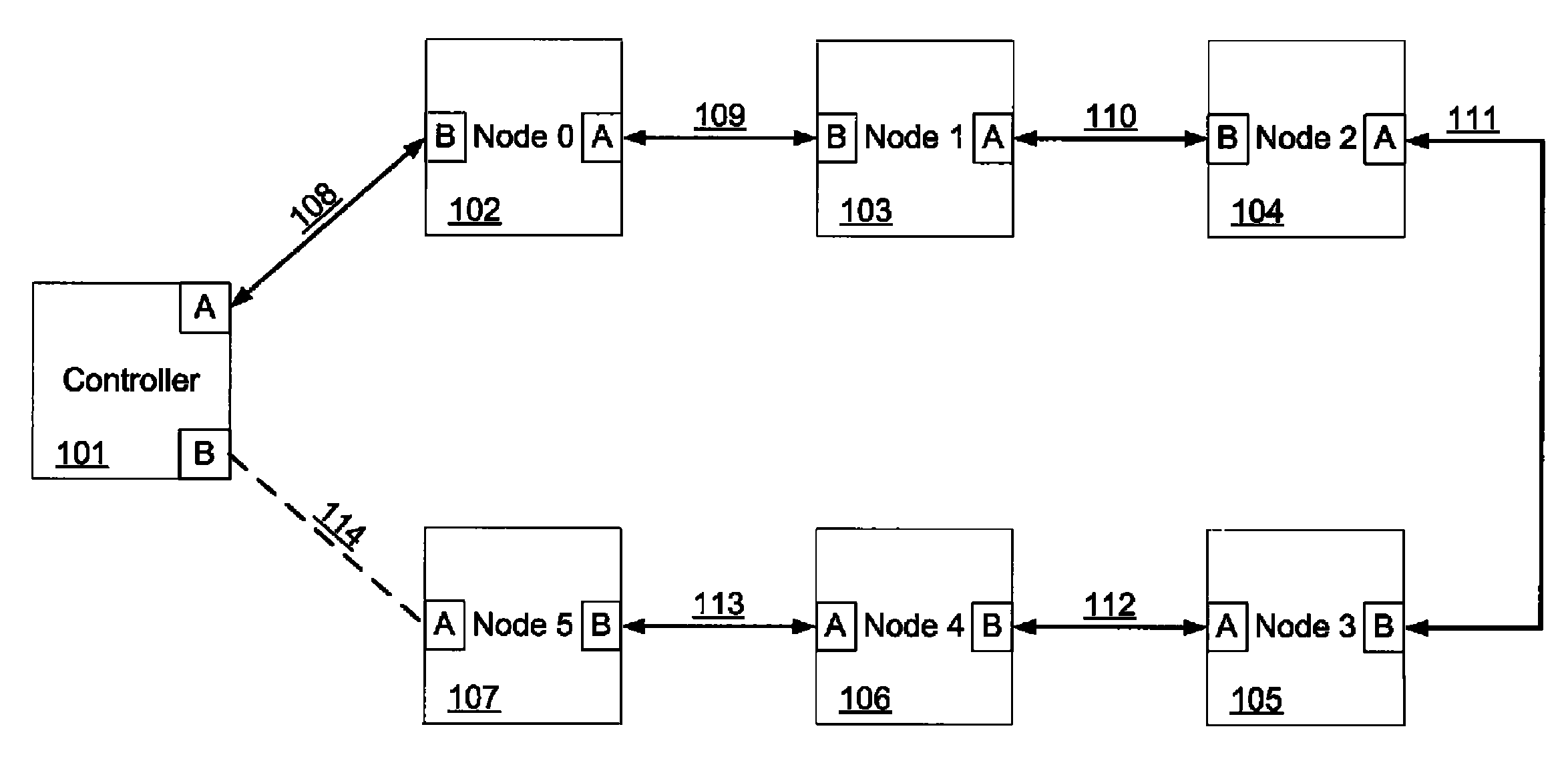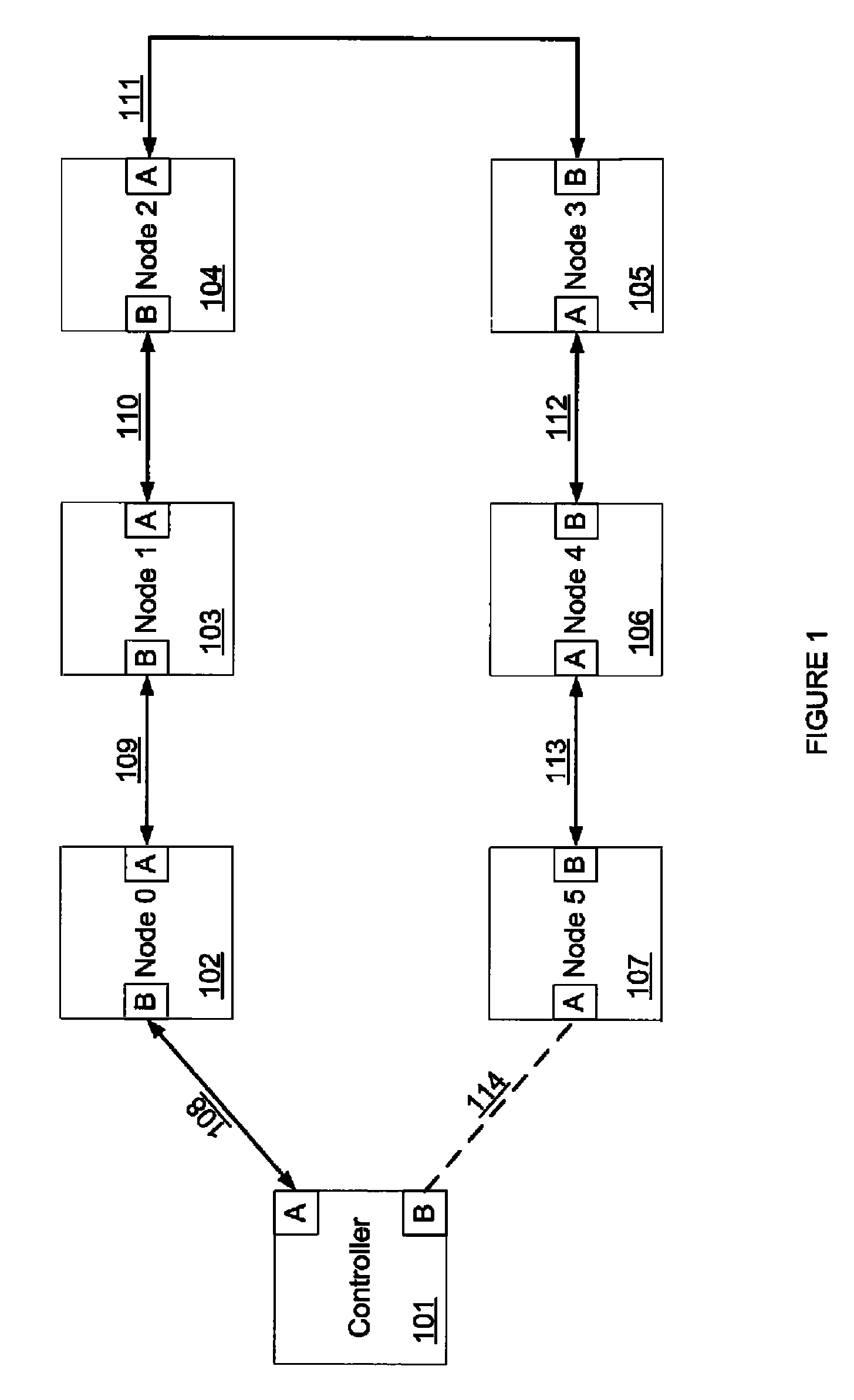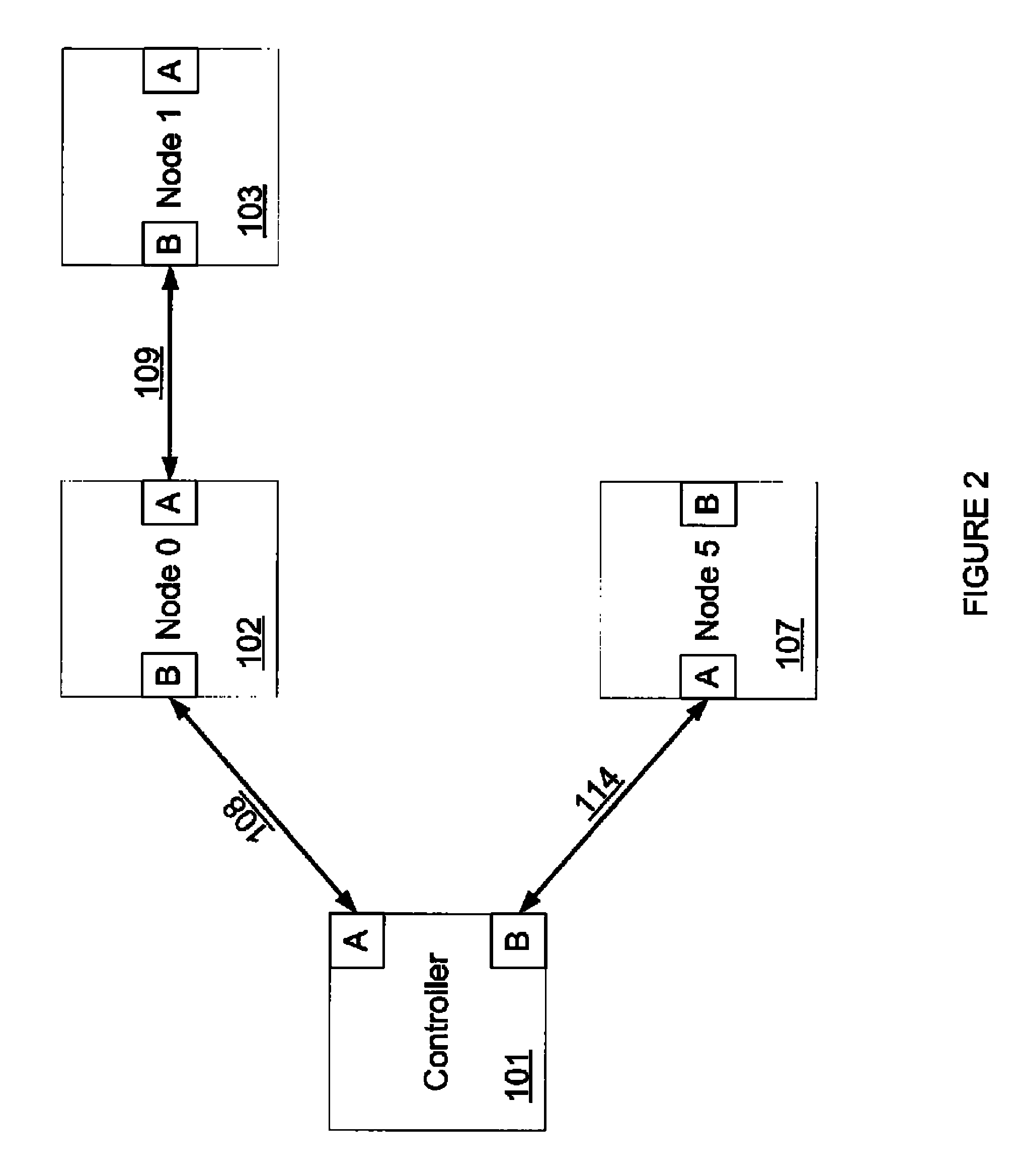Method and system for removing and returning nodes in a synchronous network
a synchronous network and node technology, applied in the field of networked systems, can solve the problems of inability to remove and replace nodes, limitations of prior art, restrictions, etc., and achieve the effect of not affecting the performance of the network, and without undue complexity
- Summary
- Abstract
- Description
- Claims
- Application Information
AI Technical Summary
Benefits of technology
Problems solved by technology
Method used
Image
Examples
Embodiment Construction
[0061]Referring now to the drawings, wherein like reference numeral designate identical or corresponding parts throughout the several views, and more particularly to FIG. 1 thereof, an example network upon which the invention can be utilized is shown. The topology is a full-duplex ring. In one embodiment, the invention can be embodied as a set of improvements to the cyclic, full-duplex, self-healing network taught by Pearce and Cline (U.S. Pat. Nos. 7,143,301 and 7,024,257), incorporated herein by reference.
[0062]The network of FIG. 1 comprises a controller 101 and seven links (e.g., bi-directional, full-duplex) capable of carrying traffic in both directions simultaneously 108, 109, 110, 111, 112, 113, 114 and six nodes 102, 103, 104, 105, 106, 107. FIG. 2 shows the network still operational after three nodes 104, 105, 106 have been removed. FIG. 3 shows the network still operational after three nodes 104, 105, 106 have been re-attached and hot-replace has been completed.
[0063]FIG. ...
PUM
 Login to View More
Login to View More Abstract
Description
Claims
Application Information
 Login to View More
Login to View More - R&D
- Intellectual Property
- Life Sciences
- Materials
- Tech Scout
- Unparalleled Data Quality
- Higher Quality Content
- 60% Fewer Hallucinations
Browse by: Latest US Patents, China's latest patents, Technical Efficacy Thesaurus, Application Domain, Technology Topic, Popular Technical Reports.
© 2025 PatSnap. All rights reserved.Legal|Privacy policy|Modern Slavery Act Transparency Statement|Sitemap|About US| Contact US: help@patsnap.com



